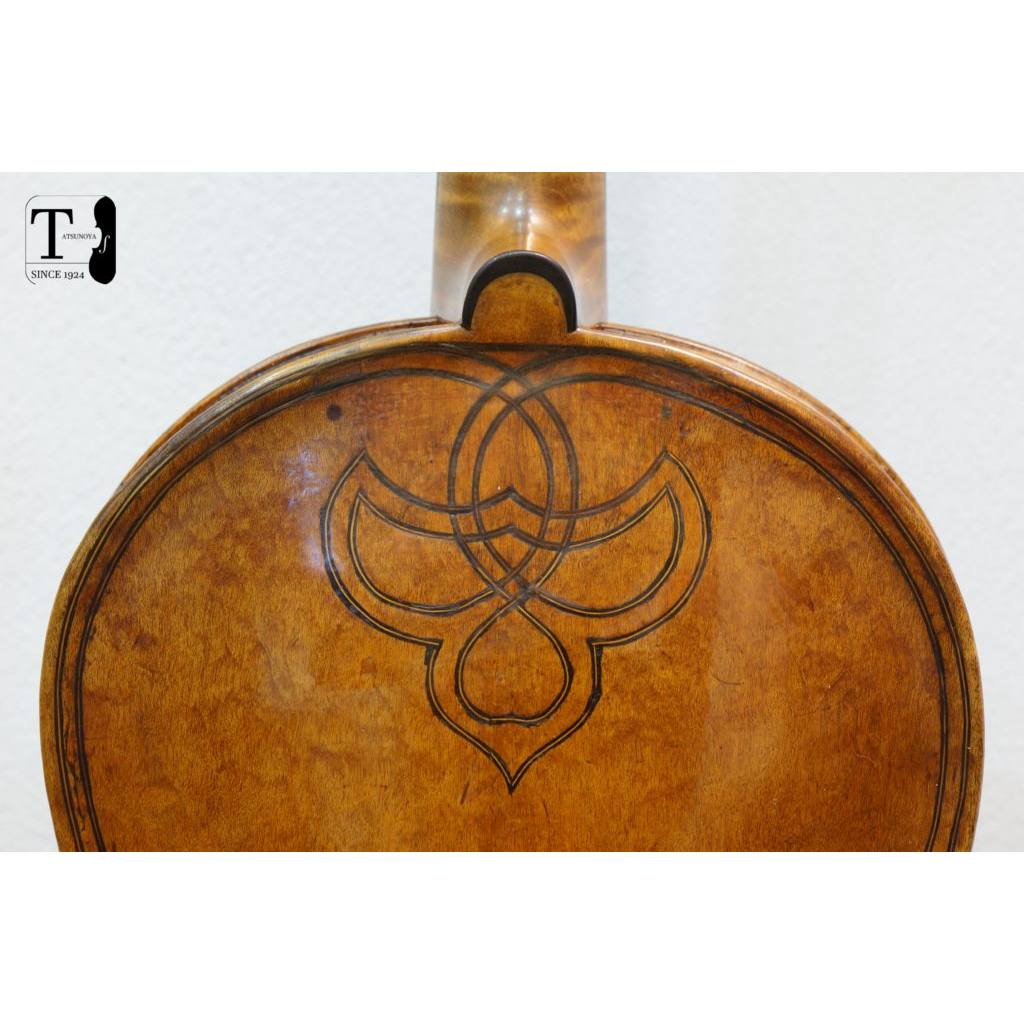
Giovanni Paolo Maggini
Maggini /
Brescia, Italy /
1580-1632
/
Born in Botticino, Brescia, Italy in 1580.
From 1595 he worked as an assistant to Gasparo da Salo (Bertolotti Gasparo da Salo 1540-1609).
Around 1610, he opened his own business in the former palace area of the Podesta.
In 1621-1622 he moved to Bombaserie in the San Agata district, where he lived with his family until his death from the plague.
He was such an important figure in the early history of the violin that a monument to him was erected in Brescia in 1907.
Maggini made far more violins than his teacher, Gasparo da Salò.
In addition, by producing a slightly smaller viola (contralto viola), the performance of the viola was raised to the highest level ever.
Other instruments, such as cellos, are extremely rare.
He also made violins that were sometimes very large and had a high arch.
It is a skillfully crafted instrument, albeit somewhat crude, and is thought to have influenced the "long pattern" instruments made by later composers such as Bartolomeo Giuseppe Guarneri "del Gesu" (1698-1744), as well as Antonio Stradivari (1644-1737) in the 1690s and 1700s.
They frequently make double-purfled instruments, often with arabesque purfling decoration on the back.
The F-hole is long, and the top and bottom holes are the same size.
The early scrolls were crude, but towards the end of his life they became closer to the intricate workmanship of Cremona.
The dark tan varnish is a beautiful golden brown shade.
Since Mazzini's labels do not include dates, the dates of his works are largely speculative, and dendrochronological studies have confirmed that some of the instruments attributed to Mazzini were made after his death.
This suggests that after his death, instrument making was continued by an unidentified successor.
His violas were always in demand, but his large, dark-toned violins also reached the height of their popularity in the second half of the 19th century.
Mazzini's work has often been imitated and counterfeited due to its distinctive style and diverse compositional features.
Furthermore, many instruments made in good faith in the 17th and 18th centuries by makers in the Brescian tradition have been relabelled by unscrupulous traders as Maggini.
He died in Brescia in 1632 (aged 52).
Quoted from The Brompton's Book of Violin and Bow Makers
From 1595 he worked as an assistant to Gasparo da Salo (Bertolotti Gasparo da Salo 1540-1609).
Around 1610, he opened his own business in the former palace area of the Podesta.
In 1621-1622 he moved to Bombaserie in the San Agata district, where he lived with his family until his death from the plague.
He was such an important figure in the early history of the violin that a monument to him was erected in Brescia in 1907.
Maggini made far more violins than his teacher, Gasparo da Salò.
In addition, by producing a slightly smaller viola (contralto viola), the performance of the viola was raised to the highest level ever.
Other instruments, such as cellos, are extremely rare.
He also made violins that were sometimes very large and had a high arch.
It is a skillfully crafted instrument, albeit somewhat crude, and is thought to have influenced the "long pattern" instruments made by later composers such as Bartolomeo Giuseppe Guarneri "del Gesu" (1698-1744), as well as Antonio Stradivari (1644-1737) in the 1690s and 1700s.
They frequently make double-purfled instruments, often with arabesque purfling decoration on the back.
The F-hole is long, and the top and bottom holes are the same size.
The early scrolls were crude, but towards the end of his life they became closer to the intricate workmanship of Cremona.
The dark tan varnish is a beautiful golden brown shade.
Since Mazzini's labels do not include dates, the dates of his works are largely speculative, and dendrochronological studies have confirmed that some of the instruments attributed to Mazzini were made after his death.
This suggests that after his death, instrument making was continued by an unidentified successor.
His violas were always in demand, but his large, dark-toned violins also reached the height of their popularity in the second half of the 19th century.
Mazzini's work has often been imitated and counterfeited due to its distinctive style and diverse compositional features.
Furthermore, many instruments made in good faith in the 17th and 18th centuries by makers in the Brescian tradition have been relabelled by unscrupulous traders as Maggini.
He died in Brescia in 1632 (aged 52).
Quoted from The Brompton's Book of Violin and Bow Makers
Choose options

Giovanni Paolo Maggini
Sale price
希望小売価格
¥0(税込 ¥0)
